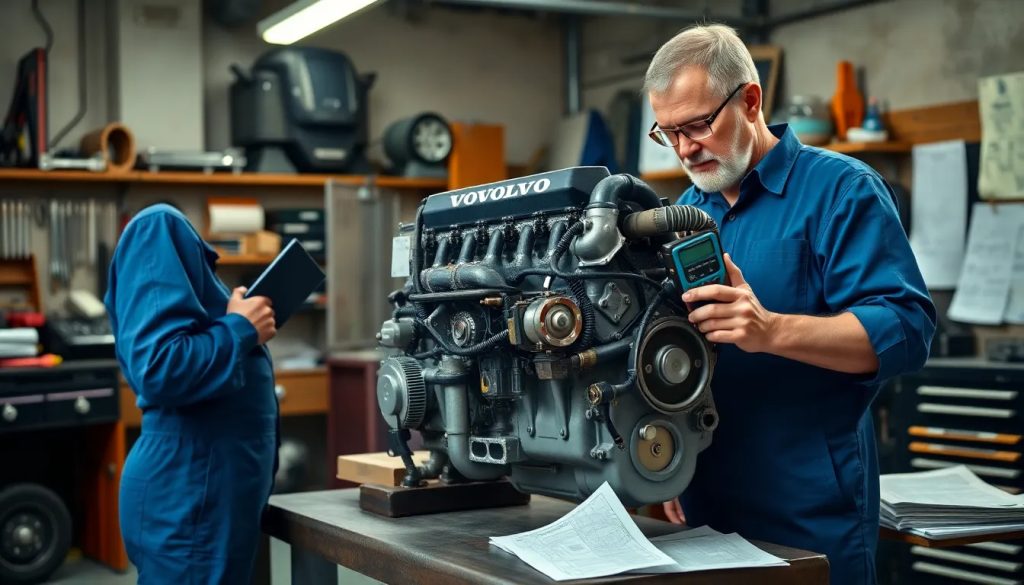2016 Volvo D13 engine problems

The 2016 Volvo D13 engine has gained attention for various issues that can impact its performance. Understanding these problems is crucial for truck owners and operators to maintain their vehicles effectively. This article delves into the most common issues, symptoms, and maintenance tips to keep the Volvo D13 engine running smoothly.
- What are the most common issues with the 2016 Volvo D13 engine?
- What symptoms indicate a problem with the 2016 Volvo D13 engine?
- How can fuel delivery problems affect the 2016 Volvo D13 engine?
- What role do injector sleeves play in 2016 Volvo D13 engine problems?
- How important is regular maintenance for the 2016 Volvo D13 engine?
- What are the potential causes of jerking in the 2016 Volvo D13 engine?
- What should you inspect when experiencing issues with the 2016 Volvo D13 engine?
- Related questions about 2016 Volvo D13 engine performance and maintenance
What are the most common issues with the 2016 Volvo D13 engine?
The 2016 Volvo D13 engine problems often stem from several issues that users frequently report. One of the most significant concerns is related to the fuel delivery system. Problems in this system can lead to poor engine performance and efficiency.
Another common fault involves leaks from the injector sleeves, which can result in coolant loss and trouble starting the engine. Additionally, issues with the EGR cooler can also contribute to overheating and reduced performance.
Some drivers also experience jerking sensations during stops or low speeds, which frequently indicates a problem with either the fuel injectors or air bubbles in the fuel system.
What symptoms indicate a problem with the 2016 Volvo D13 engine?
Identifying symptoms early can help in addressing 2016 Volvo D13 engine problems. The most evident sign is often a noticeable drop in power or acceleration. If the engine struggles to maintain speed, it could signify underlying issues needing immediate attention.
Other symptoms include unusual noises from the engine bay, which may suggest problems with the turbo components or fuel injectors. Additionally, frequent regeneration cycles can indicate issues with the EGR system or the turbocharger.
Drivers may also notice increased exhaust smoke or a rise in fuel consumption, which can be attributed to fuel delivery issues or injector malfunctions.
How can fuel delivery problems affect the 2016 Volvo D13 engine?
Fuel delivery issues in the Volvo D13 engine can have a significant impact on overall performance. When the fuel system is compromised, it disrupts the balance of air and fuel required for optimal combustion.
This can lead to symptoms like engine misfires and reduced fuel efficiency, which can further exacerbate the wear and tear on engine components. If left unchecked, issues with the fuel injectors can lead to severe engine damage.
Moreover, air bubbles in the fuel lines can cause inconsistent fuel flow, ultimately resulting in power loss. Regular inspection of fuel filters and injectors is vital for maintaining engine health.
What role do injector sleeves play in 2016 Volvo D13 engine problems?
Injector sleeves are critical components in the 2016 Volvo D13 engine that can lead to serious problems when they fail. These sleeves seal the fuel injectors, preventing leaks that can result in coolant loss or fuel contamination.
When injector sleeves wear out, it can cause fuel to leak into the coolant system, leading to overheating and potential engine damage. This problem can also create starting issues, as the fuel system becomes compromised.
Regularly inspecting and replacing worn injector sleeves can help mitigate these risks and ensure the engine operates smoothly.
How important is regular maintenance for the 2016 Volvo D13 engine?
Regular maintenance is crucial for preventing 2016 Volvo D13 engine problems. A well-maintained engine not only performs better but also lasts longer. Key maintenance tasks include oil changes, filter replacements, and inspections of key components like the EGR cooler and turbocharger.
Owners should schedule regular diagnostic tests to identify potential issues before they escalate. Monitoring fluid levels and checking for leaks can also help in maintaining engine health.
Incorporating a routine maintenance schedule can significantly reduce the likelihood of unexpected breakdowns and costly repairs.
What are the potential causes of jerking in the 2016 Volvo D13 engine?
Jerking during operation can be attributed to several factors affecting the Volvo D13 engine. One major cause is fuel delivery problems, often linked to faulty injectors or air bubbles in the fuel system.
Additionally, issues with the transmission, such as pilot bearing failures or clutch slippage, can also cause jerking sensations. Drivers should also consider checking the EGR differential pressure sensors, as malfunctioning components can impact engine performance.
Identifying the source of the jerking is essential for ensuring that the vehicle operates smoothly and efficiently.
What should you inspect when experiencing issues with the 2016 Volvo D13 engine?
When facing issues with the 2016 Volvo D13 engine, it’s vital to conduct a thorough inspection of multiple components. First, examine the fuel system, including the fuel injectors and filters, to identify any clogs or leaks.
Next, inspect the EGR cooler and associated hoses for signs of wear or damage, as these components can significantly impact engine efficiency.
Also, check the turbocharger and its components, as they play a crucial role in maintaining power and performance. Here’s a quick checklist of components to inspect:
- Fuel injectors
- Injector sleeves
- EGR cooler and hoses
- Turbocharger components
- Transmission parts
Performing these inspections regularly can help maintain engine performance and prevent severe damage.
Is the Volvo D13 engine good or bad?
The Volvo D13 engine has a reputation for being both reliable and efficient. However, it is not without its challenges. Many users reported 2016 Volvo D13 engine problems related to fuel delivery and injector issues.
While some drivers may experience significant problems, others find the engine performs exceptionally well with proper maintenance. Thus, the engine's reliability often depends on the owner's commitment to regular upkeep.
What is the life expectancy of the Volvo D13 engine?
The life expectancy of a Volvo D13 engine can vary widely based on factors such as maintenance practices and usage. Typically, with regular maintenance, these engines can last between 500,000 and 1,000,000 miles.
Proper care, including timely oil changes and inspections, plays a crucial role in extending the engine's lifespan. As such, drivers should prioritize maintenance to achieve optimal performance over the long term.
What is the problem with the Volvo D13 turbo compound?
Issues with the turbo compound in the Volvo D13 can arise due to various factors, including wear and tear, and poor maintenance. Common symptoms include a loss of power and increased exhaust smoke.
If the turbocharger malfunctions, it can significantly affect engine performance and fuel efficiency. Regular inspections of turbo components are essential for maintaining engine health and preventing unexpected failures.
How many miles is a DD13 engine good for?
The DD13 engine, similar to the D13, can also achieve impressive mileage when maintained properly. Generally, these engines can last up to 750,000 miles with appropriate care.
Regular servicing, including fluid changes and system inspections, helps ensure the engine operates efficiently and extends its life expectancy.
 Volvo D13 engine not starting: troubleshooting guide
Volvo D13 engine not starting: troubleshooting guide D13 volvo engine vs cummins isx: which is better?
D13 volvo engine vs cummins isx: which is better? Volvo D13 engine codes explained
Volvo D13 engine codes explained Oil leak on Volvo D13 engine: causes and solutions
Oil leak on Volvo D13 engine: causes and solutionsIf you want to know other articles similar to 2016 Volvo D13 engine problems you can visit the category VOLVO.
Leave a Reply

RELATED POSTS